Shot in 3D Gog is the third film in the Office of Scientific Investigation (OSI) Trilogy, following The Magnetic Monster (1953) and Riders to the Stars (1954), which were produced by Ivan Tors and exist mainly for his love of science fact more than science fiction. He did his best to make his films seem like real glimpses into the future and not silly fanciful films like his contemporaries were making, and though some of the “science moments” may seem laughable now there were certainly way ahead of the curve when you considering most films of the genre were more focused on rubber suited monsters and aliens than any hard science.
Even more impressive is how influential these films were. The underground facility is clearly the forerunner to countless such hidden bases in science fiction movies from The Andromeda Strain to Resident Evil. In some cases the influences are even more obvious as The Office of Scientific Investigation (OSI) was later used as the name for the organization that Jaimie Summers aka The Bionic Woman worked for, the Marvel series Agent Carter has our heroine works for Strategic Scientific Reserve (SSR) where they investigative illegal doings in the scientific community much as our hero in Gog does, and of course you could even say Mulder and Scully’s X-Files investigations were one part OSI two parts Kolchak: The Night Stalker.
Many science fiction tropes such as the idea of suspended animation to aid in space travel made their first appearance in Gog. The movie’s first scene is a group of scientists doing a test on a resus monkey to see if it can be safely frozen and thawed out. The test is successful but unfortunately the lead scientist Dr. Hubertus (Michael Fox) finds himself locked in the freezing chamber while his assistant Dr. Kirby (Aline Town) is down the hall getting a new thermometer. The door to the chamber seemed to close on its own as the room quickly droped to sub-zero temperatures. This our first inkling that maybe we are dealing with a mad computer bent on wiping out the humans.
When Dr. Kirby returns she enters the chamber to find Dr. Hubertus frozen and shattered to pieces and the scene ends with her screaming as the door closes on her. This is a great “cold open” (pun intended) and as scientist after scientist is killed off in a variety of horrifying ways the tension just ratchets up. It’s these problems that lead to laboratory supervisor Dr. Van Ness (Herbert Marshall) calling in Dr. David Sheppard (Richard Egan), an OSI security agent, to find the cause of the mysterious deaths. He is aided by Joanna Merritt (Constance Dowling), who works at the facility and is given the job of showing Sheppard around, but we soon discover that she is an undercover agent for OSI herself and is also romantically involved with Sheppard. The two of them running from murder scene to murder scene is so X-Files like one would be hard pressed to believe Chris Carter never saw this movie.
Science fiction and government conspiracy get their start here with these two.
Now the poster promises killer robots and the film does deliver…kind of. This underground facility’s security measures, and almost all of its whizbang features, are controlled by a super-computer called NOVAC (Nuclear Operative Variable Automatic Computer) and its designer Dr. Zeitman (John Wengraf) who is aided in his work by two robots called Gog and Magog. I’m not sure why a scientist would name two robots after the hostile nations from The Book of Revelations that lead to Armageddon, but in my opinion that’s just asking for trouble.If he’d made four robots would they have been named after the Horsemen of the Apocalypse?
But as I said earlier this is not a case of a sentient computer going haywire as Sheppard quickly figures out that NOVAC is being hacked by a foreign power and that the robots are just pawns of a Cold War enemy. The viability of this mystery is a little suspect when earlier in the film Van Ness shows Sheppard a pair of advanced radar beacons that they had found hidden in the facility, and these beacons could be used as targeting devices to lead a nuclear missile right down on their heads. Now the idea of computer controlling systems to kill is one thing but how did those devices get down inside this super secure facility? Even if we buy that Gog and Magog are able to sneak around this base to plant such devices, and after watching these two robots slowly trundle around I seriously doubt that, the enemy spies would still have to get inside the base to hand deliver the beacons.Stealthy these things are not.
Another interesting element of this film is that though at first we believe this facility is all about that advancement of mankind we soon learn that the space station they have planned will be solar powered and that the mirror that takes in the sun’s rays, and turns these solar rays into power, can also be used to decimate entire cities in fiery conflagrations. All this years before Ronald Reagan would announce his Star Wars defense initiative.At the end of the film Dr. Van Ness talks of a successful launch of a new satellite, “Actually a flying television set. The station will circle round the Earth and through its eye we will be able to see everything that takes place on this tired old world.”
So the “good guys” in this movie launch the first spy satellite that will hopefully keep tabs on America’s enemies. Yeah, that’s not at all frightening. This was the 50s and the sensibilities were certainly more right wing than they are now (though apparently drifting back that way if you watch any Republican debate), with such things as the McCarthy communist witch hunts taking place across the country and the Big Red Scare that fueled countless movies and television shows. But communism isn’t the only ism that gets a hit in this film and that other one would of course be feminism. Early science fiction films, especially those in the 50s, have not been all that kind to women. Most movies of that era depicting space travel have women as either the person who gets the coffee or she is the part of an alien race of man hating women. In Gog Joanna Merritt is shown as fairly capable and intelligent person, and you don’t get many female undercover agents in films unless they are the femme fatale, but she still has to be protected by "the man" and she has to deal with his chauvinistic bullshit. When Sheppard questions why there are women in the space program Joanna notes that the lack of gravity changes things, “There is no weaker sex in space.” Sheppard’s response, “That’s why I like it here.” Yes ladies and gentleman that is a 50s hero. And of course when one of the women staffers goes into hysterics he has to give her a good slap to calm her down.
Period sexism and political views aren’t the only thing that makes this a classic 50s science fiction movie and that would of course be the science itself. Now Ivan Tors was a huge fan of science and wanted his films to be more science speculation than pure science fiction, and in some areas he did a fairly good job, but then we get a scene where someone (or something) contaminated one of the labs with a radioactive isotope, one of the lab techs uses a Geiger counter to track down the source of the radiation and he tells Sheppard and Joanna to, “Let me go first. It’s pretty hot.” As if staying a few feet behind will keep them safe.
The A-Bomb is responsible for so many giant monsters in movies it’s no wonder that even directors who are trying to get the science right still have not a clue as to how radiation really works. I wouldn’t be surprised to find out that the government used films like this for disinformation about nuclear testing and the dangers of radiation. Regardless of how much of the science this film fudged or got completely wrong producer Ivan Tors and director Herbert L. Strock managed to put together a rather good little thriller chock full of; murderous computers, killer robots, agents of science, and dangers at every turn. All this makes it a film well worth checking out.
Note: Released at the tail end of the 3D craze only handful of theatres showed Gog in its intended 3D format, which is a shame as the use of depth is beautifully utilized here with only a few “Coming at you” gimic moments.
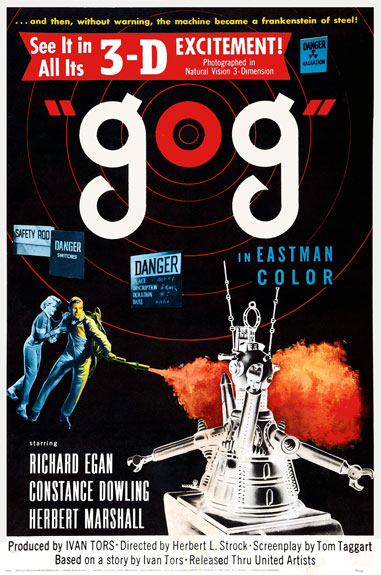

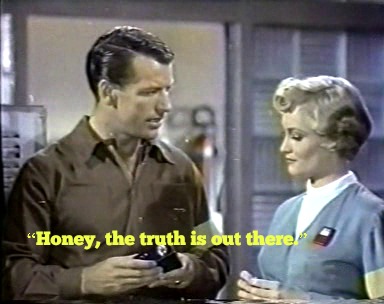
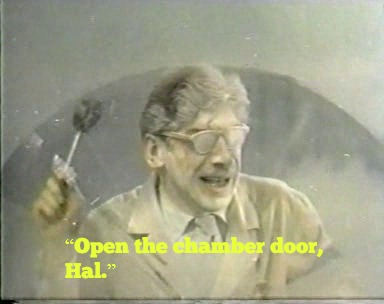
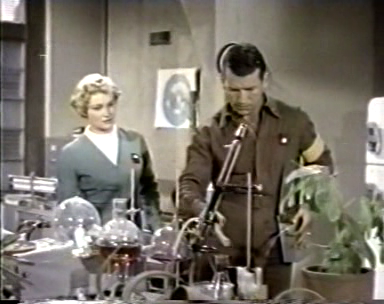
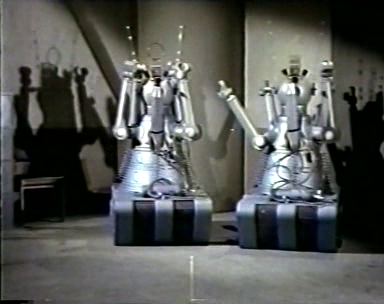






No comments:
Post a Comment